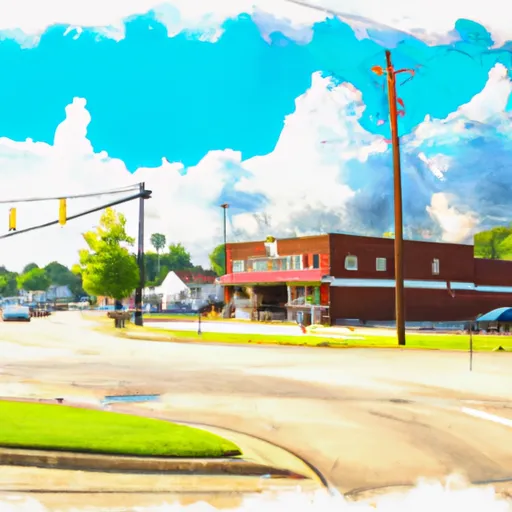-
 Snoflo Premium
Snoflo Premium
Get unlimited access to all our content
With no Ad interruptions! - Start Your Free Trial Login with existing account
Burna
Eden Index
Climate
8.0
•
Recreation
2.8
•
Community
1.5
•
Safeguard
4.6/10

Burna is a small unincorporated community in Livingston County, Kentucky. It has a humid subtropical climate with hot summers and mild winters. The area is rich in hydrology constituents, including the Ohio River and several smaller streams and creeks. The land surrounding Burna is primarily rural with forested areas and farmland. Outdoor recreation opportunities include fishing, boating, and hiking in nearby parks such as Land Between the Lakes National Recreation Area, which offers over 170,000 acres of recreational activities including camping, wildlife viewing, and water sports. Burna also has access to the Kentucky Lake, which is a popular spot for fishing and boating.
What is the Eden Index?
The Snoflo Eden Index serves as a comprehensive rating system for regions, evaluating their desirability through a holistic assessment of climate health, outdoor recreation opportunities, and natural disaster risk, acknowledging the profound impact of these factors on livability and well-being.
Climate Health Indicator (CHI): 8.0
Burna receives approximately
1236mm of rain per year,
with humidity levels near 85%
and air temperatures averaging around
14°C.
Burna has a plant hardyness factor of
7, meaning
plants and agriculture in this region tend to thrive during the non-winter months.
By considering the ideal temperature range, reliable water supplies, clean air, and stable seasonal rain or snowpacks, the Climate Health Indicator (CHI) underscores the significance of a healthy climate as the foundation for quality living.
A healthy climate is paramount for ensuring a high quality of life and livability in a region, fostering both physical well-being and environmental harmony. This can be characterized by ideal temperatures, reliable access to water supplies, clean air, and consistent seasonal rain or snowpacks.
Weather Forecast
Streamflow Conditions
Lower Cumberland
Area Rivers
Lower Cumberland
Snowpack Depths
Lower Cumberland
Reservoir Storage Capacity
Lower Cumberland
Groundwater Levels
Recreational Opportunity Index (ROI): 2.8
The Recreational Opportunity Index (ROI) recognizes the value of outdoor recreational options, such as parks, hiking trails, camping sites, and fishing spots, while acknowledging that climate plays a pivotal role in ensuring the comfort and consistency of these experiences.
Access to outdoor recreational opportunities, encompassing activities such as parks, hiking, camping, and fishing, is crucial for overall well-being, and the climate plays a pivotal role in enabling and enhancing these experiences, ensuring that individuals can engage in nature-based activities comfortably and consistently.
Camping Areas
| Campground | Campsites | Reservations | Toilets | Showers | Elevation |
|---|---|---|---|---|---|
| Natchez Trace State Park | 50 | 637 ft | |||
| Bladon Springs State Park | 10 | 193 ft | |||
| Lakeview RV City Park | None | 230 ft | |||
| Sam Parr State Park | 80 | 524 ft | |||
| Lenoir Landing - Coffeeville Lake | None | 52 ft | |||
| Cochrane | None | 166 ft | |||
| Citronelle Lakeview RV Park | 24 | 226 ft | |||
| Lake Tom Bailey | 32 | 299 ft | |||
| Sumter Rec Area | None | 128 ft | |||
| Service | 32 | 123 ft |
Catastrophe Safeguard Index (CSI):
The Catastrophe Safeguard Index (CSI) recognizes that natural disaster risk, encompassing floods, fires, hurricanes, and tornadoes, can drastically affect safety and the overall appeal of an area.
The level of natural disaster risk in a region significantly affects safety and the overall livability, with climate change amplifying these risks by potentially increasing the frequency and intensity of events like floods, fires, hurricanes, and tornadoes, thereby posing substantial challenges to community resilience and well-being.
Community Resilience Indicator (CRI): 1.5
The Community Resilience Indicator (CRI) recognizes that education, healthcare, and socioeconomics are crucial to the well-being of a region. The CRI acknowledges the profound impact of these elements on residents' overall quality of life. By evaluating educational resources, healthcare accessibility, and economic inclusivity, the index captures the essential aspects that contribute to a thriving community, fostering resident satisfaction, equity, and social cohesion.

